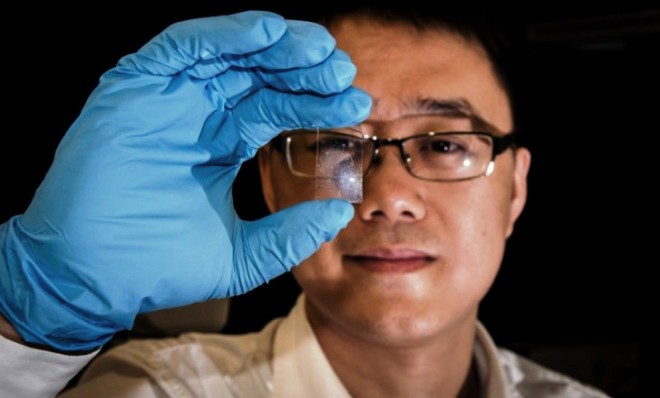1,000 times more sensitive to light: How graphene camera sensors could revolutionize photography
Singaporean researchers are engineering some seriously futuristic optics at the nanoscale level

You probably aren't too familiar with graphene, but you soon will be. Basically, it's a two-dimensional arrangement of carbon atoms fit together like a honeycomb. Each sheet is just one-atom thick, giving it a structural integrity that makes for the the world's strongest material. It also has some pretty magical properties that are perfect for tomorrow's electronics.
Not only is graphene extremely flexible, durable, and conductive to electricity, but it also possesses the unique ability to "absorb light over a very broad wavelength range," notes ExtremeTech. With some minor nanostructural changes and the addition of a transistor, graphene can help us see things today's best optics can't — even in near-total darkness.
Researchers in Singapore have now tapped graphene's superior imaging capabilities to build a camera sensor that's 1,000 times more sensitive to light than those found in today's CMOS or CCD camera sensors. Better yet, the graphene sensor consumes about 10 times less energy, and will reportedly be five times cheaper to produce.
The Week
Escape your echo chamber. Get the facts behind the news, plus analysis from multiple perspectives.

Sign up for The Week's Free Newsletters
From our morning news briefing to a weekly Good News Newsletter, get the best of The Week delivered directly to your inbox.
From our morning news briefing to a weekly Good News Newsletter, get the best of The Week delivered directly to your inbox.
"We have shown that it is now possible to create cheap, sensitive, and flexible photo sensors from graphene alone," Wang Qijie, an assistant professor at Nanyang Technological University who is credited with inventing the graphene sensor, tells Science Daily. "We expect our innovation will have great impact not only on the consumer imaging industry, but also in satellite imaging and communication industries, as well as the mid-infrared applications."
Consider the possibilities: Space telescopes outfitted with graphene sensors could help us peer even further into the universe's oldest corners, discovering galaxies and worlds we would have never seen otherwise. Here on Earth, security cameras could take crystal-clear photos even with all the lights out.
That said, today's manufacturing limitations probably means that graphene won't be coming to your iPhone anytime soon. (Meticulously fitting carbon atoms into a lattice structure is tough work, after all.) But in the not-so-distant future? Those annoying camera flashes making for blurry, washed-out photos could very well be obsolete.
A free daily email with the biggest news stories of the day – and the best features from TheWeek.com
-
 The elite falcon trade in the Middle East
The elite falcon trade in the Middle EastUnder the Radar Popularity of the birds of prey has been ‘soaring’ despite doubts over the legality of sourcing and concerns for animal welfare
-
 A running list of the international figures Donald Trump has pardoned
A running list of the international figures Donald Trump has pardonedin depth The president has grown bolder in flexing executive clemency powers beyond national borders
-
 Mixed nuts: RFK Jr.’s new nutrition guidelines receive uneven reviews
Mixed nuts: RFK Jr.’s new nutrition guidelines receive uneven reviewsTalking Points The guidelines emphasize red meat and full-fat dairy